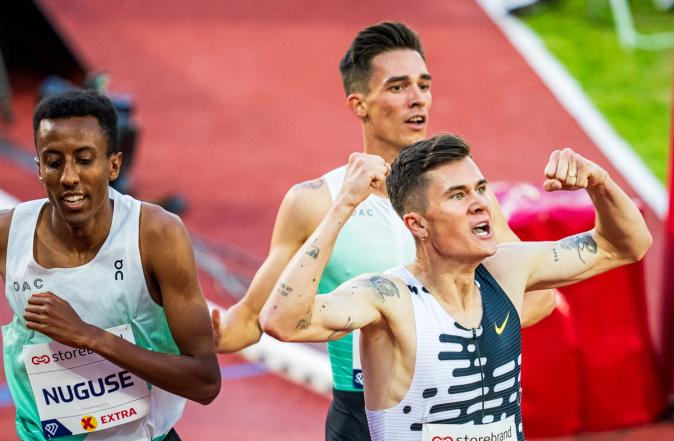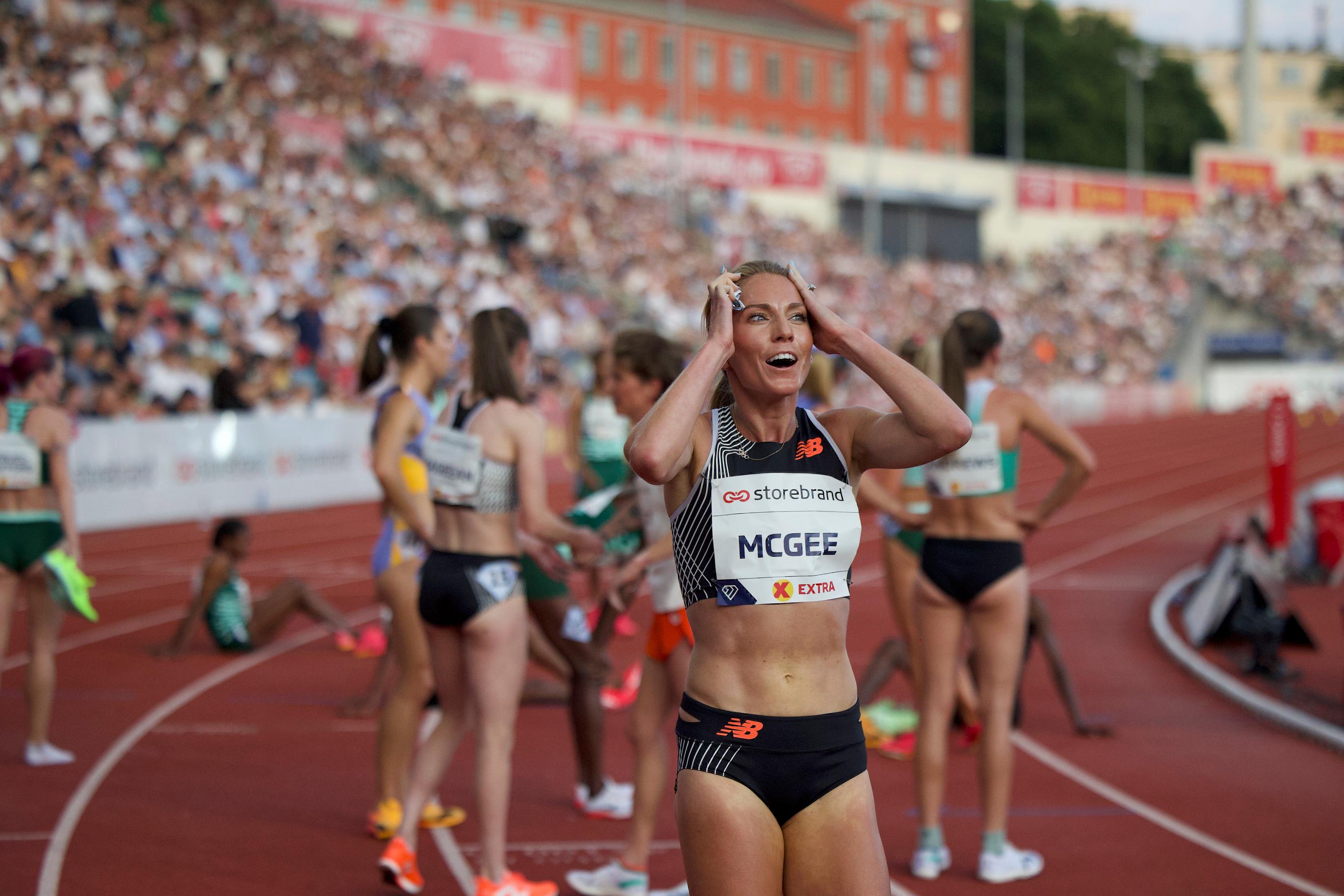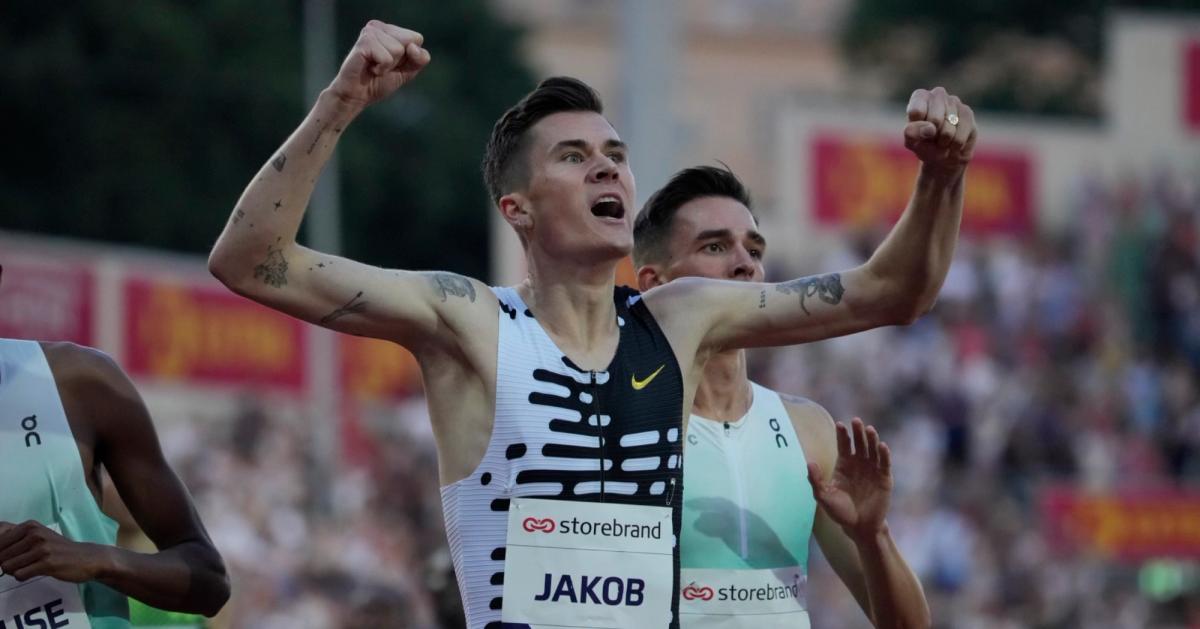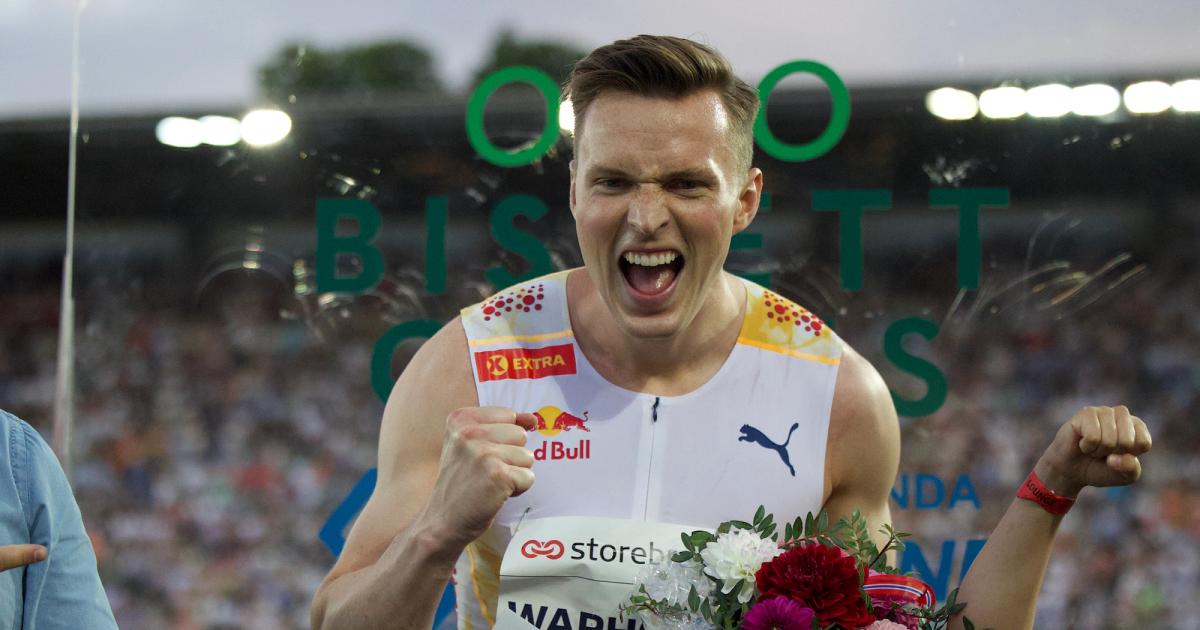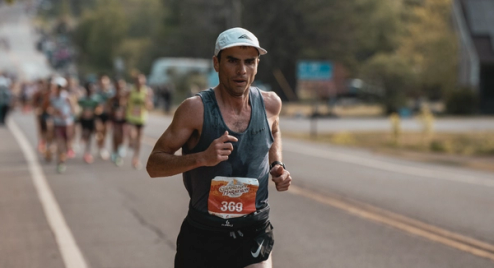By Kyle Merber
June 21, 2023
I was sitting beside the Hudson River the other day with an old friend who also happened to be a retired 1500m runner. As we sipped our iced Americanos he asked, “Do you miss it?” My answer was, “Not at all! But I can’t help but feel if I was born a few years later that I’d have run a few seconds faster.”
I hope that doesn’t make me a narcissist… or like I’m making up a story that sounds vaguely like a mash-up of several scenes from the first Men in Black movie.
This season is still young, but it’s already been incredibly exciting for distance fans. There have been numerous world records, races to the line, and it seems like every athlete keeps busting down doors to new personal bests. Think I might have to up my phone plan soon with all of the congratulatory texts I’ve been sending out.
We’re living in a golden age of track, it seems, and before I get into the technological factors contributing to that, I gotta at least acknowledge the fact that the driving force is the athletes! They’re just good right now.
But in a sea of talent, there are few athletes in the sport more exciting right now than Jakob Ingebrigtsen. It’s not only his ability to run 3:27.95 that is a pleasure to watch, but the way he does it – from the front. There are still almost two seconds between the Norwegian and the world record, and his biggest challenge won’t be the fitness, it will be the company.
The 1500, more than most races, is about getting into the right race, and any time you’re in a race with Ingebrigtsen, then it has the potential to be exactly that. With Jakob towing the field along, eight men were under 3:30 in Oslo, and intellectual pundits like myself have started to take notice of just how fast the event is running this year.
But why is this happening?
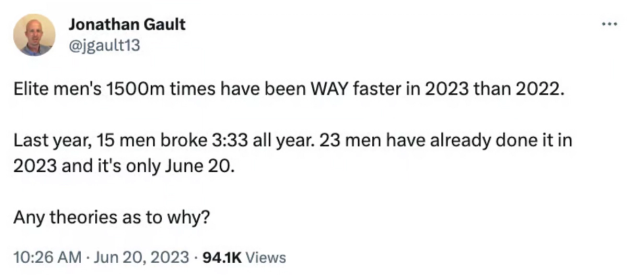
Jonathan Gault / Twitter
Let’s cross off the obvious ones like the shoe improvements, and wave light technology. We have seen the impact that those technological improvements have had on the NCAA and there is no reason why it would not also extend to the highest level of the sport.
An often discussed reason that championship races are now faster is a sport-wide over-correction to the 2016 Olympic final. Since Centrowitz’s win, the two best runners in the world, Jakob and Timothy Cheruiyot, are regular front runners who have been unafraid to push the pace or show up to race fairly often.
Looking at the results from the past 18 years could hopefully give us some insight as to other factors at play. The most men under 3:35 in a single year is 57, from 2021, and so far this year – it’s mid-June, remember – there have already been 55 men to dip below that same barrier.
The argument in 2021 was that athletes were healthy and hungry after not racing for much of 2020 due to the pandemic. So were they suddenly sickly and/or metaphorically full in 2022 when only 34 men dipped below that mark? One possible explanation is that the window opened for the 2022 World Championships on June 22nd, which is on the early side, and allowed 31 of the 57 men to achieve the standard the season before, in 2021.
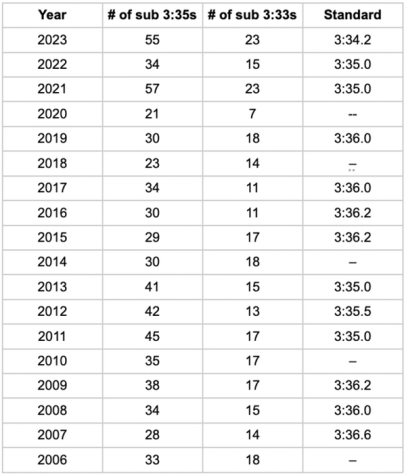
Looking at the year-by-year breakdown there is a noticeable lull in the number of sub-3:35s between 2014 and 2020, with an average of only 28 per year. During this period there were three years without a championship, and therefore no standard to chase. And in the years there were global medals up for grabs, the standard was only 3:36.0 or 3:36.2.
Is it actually surprising that when World Athletics tells athletes how high to jump that they then go out and do exactly that? If you think there are a lot of fast performances this year, wait until next year – the Olympic standard is 3:33.5! Just because the goal is for half the field to fill out via rankings, it doesn’t mean everyone won’t aim for the sure thing.
And looking at this year’s results, a huge percentage of these marks have all come from the same few races: Oslo (13), Tomblaine (10), Nice (8), and a few others with 5 or 6. The 1500 at this pace has such a thin margin for error, but on the right day, with good weather, and someone to keep things honest on the third lap, then the possibility of running fast is much greater than doing it alone.
That’s just always been the way the middle distance races have been run. There is rarely a 10 second gap to the next guy at any point like in the 5000m. Instead, you get on the train, hold on, and hope it’s a fast one.
It’s interesting to note that the number of sub-3:33s each year has seen a much smaller range, in comparison to the slightly slower time. The top tier of athletes is apparently not as heavily impacted by the set standard, plus they have a consistent set of opportunities each season. The rich keep getting richer!
But all this said… who would you bet on: the 3:36 guy who has won all of his races this season, or the 3:34 guy who comes in 10th in every Dream Mile, Fantasy Mile, Desire Mile, etc.? At a certain point the times become meaningless if you’re getting beat by that many people. I have often quipped that if you don’t finish in the top eight of a track race that it shouldn’t count. You lost to too many people!

Kyle Merber
After hanging up his spikes – but never his running shoes – Kyle pivoted to the media side of things, where he shares his enthusiasm, insights, and experiences with subscribers of The Lap Count newsletter, as well as viewers of CITIUS MAG live shows.
